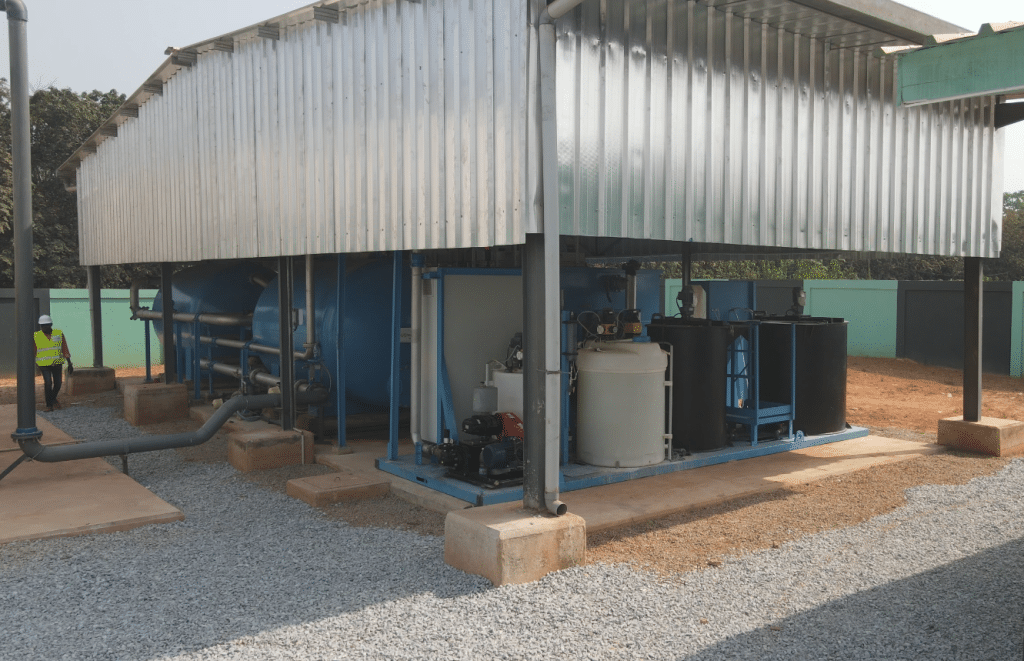This is one of the Ivorian government’s flagship initiatives. The implementation of the “Water for All” program continues with the objective of meeting the drinking water needs of the Ivorian population. And the results are already visible on the ground as water supply facilities are gradually coming on stream throughout the country.
The Ivorian government is aiming for universal access to drinking water by 2030.
The advantages of this strategic choice
Developed by the SUEZ Group, the UCDs are a decentralized and modular solution for producing drinking water. These units are compact and transported in metal containers. They can thus be deployed in the most remote areas. They are equipped with all the technologies required in a conventional drinking water plant and meet international standards.
Teams trained by SUEZ operate the UCDs © SUEZ
This system has been chosen by the government because it allows to produce drinking water in record time and to connect quickly to water towers. The UCD technology can treat both groundwater and surface water. This solution is adapted to supply areas with difficult access, or with little space, where the construction of conventional installations would be more constraining. The units are operated locally by technicians trained by SUEZ. The Ivorian government has signed a contract with SUEZ for the supply and commissioning of 40 UCDs. The first batch of 10 units was delivered in 6 months and the following batches arrived progressively.
Supply of 32 localities
In all, the 40 UCD units installed ensure the supply of drinking water in 32 towns that had a water deficit, representing a capacity of 92,000 m3 per day. In addition to Ivory Coast, the SUEZ modular solution also makes it possible to supply drinking water in other African countries. Worldwide, the UCDs provide 1,300,000 m3 per day, at 250 sites in more than 50 countries.
Through the development and deployment of this solution, SUEZ is contributing to the United Nations (UN) Sustainable Development Goal (SDG) 6, which calls for universal access to water and sanitation by 2030.
Article written in partnership with SUEZ
